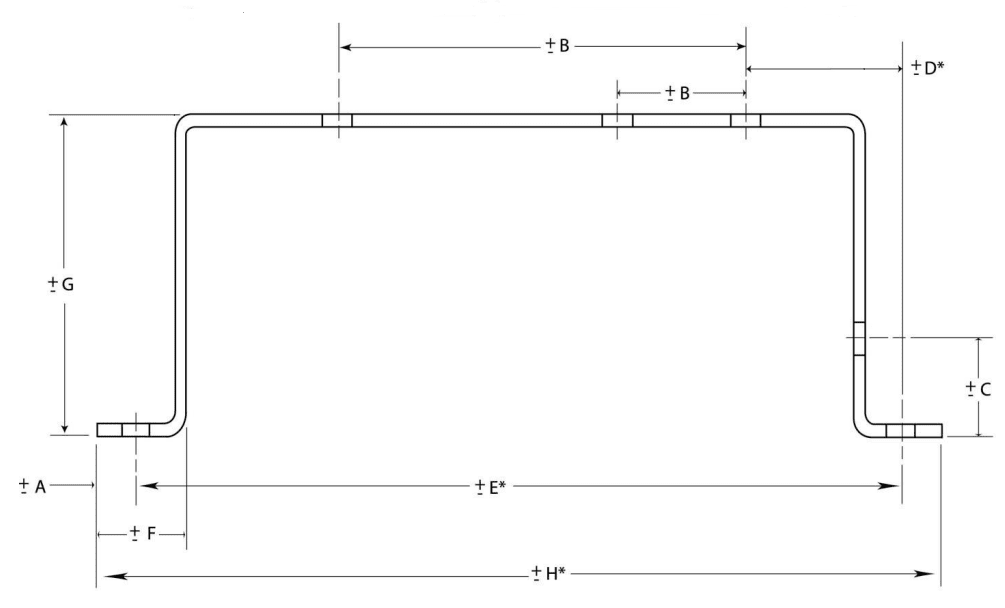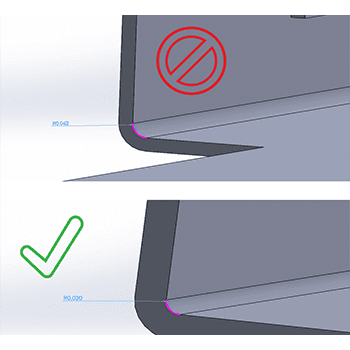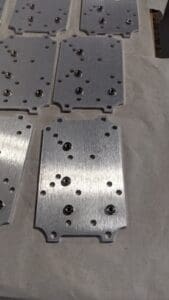Last updated on July 2nd, 2024 at 09:14 am
Sheet metal fabrication is a highly versatile process for creating durable parts, ranging from single prototypes to large-scale production runs. As a mechanical engineer, optimizing your sheet metal designs can lead to cost-effective solutions without compromising quality. In this article, we'll explore five valuable tips tailored to help you enhance efficiency and reduce costs in your projects, all within the expertise of Approved Sheet Metal.
Table of Contents
- 1 1. Material Selection Matters
- 2 2. Design with Standard Gauges in Mind
- 3 3. Embrace Simplicity in Bends
- 4 4. Strategically Manage Tolerances
- 5 Recommended Default Sheet Metal Tolerances
- 6 5. Ensure Consistent Bend Orientation
- 7 Sheet Metal Part Design for Manufacturing Tip
- 7.1 BENDS
- 7.2 Optimizing Sheet Metal Fab Design FAQ
- 7.2.1 Why is material selection important in sheet metal fabrication?
- 7.2.2 What are the benefits of designing with standard gauges in mind?
- 7.2.3 How can simplicity in bends reduce fabrication costs?
- 7.2.4 Why is it important to strategically manage tolerances in sheet metal design?
- 7.2.5 How does maintaining consistent bend orientation benefit the fabrication process?
1. Material Selection Matters
Material cost significantly impacts overall part costs. Carefully choose the appropriate material for your project and consider utilizing stock sizes to minimize waste. For prototyping, contemplate using materials like Aluminum 5052 instead of more expensive options such as 304 stainless steel. Check Approved Sheet Metal's comprehensive list of available materials to make informed decisions based on your project requirements.
Sheet Metal Material Deep Dive Articles:
- Choose the Right Material Thickness for Your Custom Metal Fabrication
- 3 Ways to Optimize Your Sheet Metal Material
- Choose the Right Material to Speed Up Lead Time for Precision Sheet Metal Parts
- Aluminum Smackdown: 5052-H32 Takes on 6061-T6 for Custom Sheet Metal Fabrication Superiority
- 4 Things You Didn’t Know about Aluminum
- 5052, 6061, 7075: ASM’s Guide to Sheet Metal Aluminum Grades
- 3 Things You Didn’t Know About Stainless Steel
- Galvanized vs. Galvannealed Steel: A Sheet Metal Comparison
2. Design with Standard Gauges in Mind
When designing your sheet metal parts, adhere to standard sheet metal gauges. Approved Sheet Metal can manufacture sheet metal parts up to ¼” (6.35mm) in thickness, depending on the part's geometry. Using thicker metals may impose limitations on achievable bends, so designing to common gauges ensures optimal manufacturability. Familiarize yourself with Approved Sheet Metal's capabilities and constraints to streamline your design process.
3. Embrace Simplicity in Bends
Simplicity is key in optimizing sheet metal fabrication costs. Design your parts with straightforward angled bends, featuring a radius equal to or greater than the sheet's thickness. Complex designs tend to incur higher costs, and small bends on large, thick parts may lead to inaccuracies. Explore Approved Sheet Metal's Design Guide for sheet metal, providing valuable best practices for creating cost-effective and precise sheet metal pieces.
Sheet Metal Forming Deep Dive Articles:
- Are You Using the Right Bend Radius for Your Precision Sheet Metal Formed Part?
- The Best Metal Bending Solution for Sheet Metal Prototyping
- 5 Best Practices for Precision Sheet Metal Fabrication Drawings
- Use This Flange Formula for Sheet Metal Forming
- Designing and Forming U-Shaped Sheet Metal Fabricated Parts
- The 3:1 Rule for Precision Sheet Metal punch forming
4. Strategically Manage Tolerances
Carefully assess the critical features of your part to determine necessary tolerances. Excessive tolerance callouts on various features, such as radii, hole diameters, and distances, can escalate manufacturing costs. To reduce expenses, assign tolerances only to mission-critical features and surfaces. Approved Sheet Metal's expertise ensures that your parts meet the required specifications without unnecessary additional costs.
5. Ensure Consistent Bend Orientation
Maintain uniform bend orientation for parts in the same plane to avoid unnecessary reorientation during fabrication. Consistent bend radii contribute to cost-effectiveness and precision. Approved Sheet Metal provides detailed insights on the basics of bending sheet metal in their blog post, offering valuable information for engineers seeking optimal design practices.






